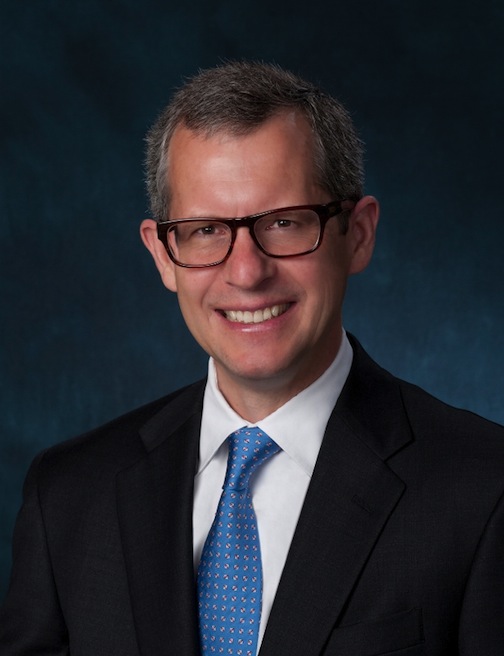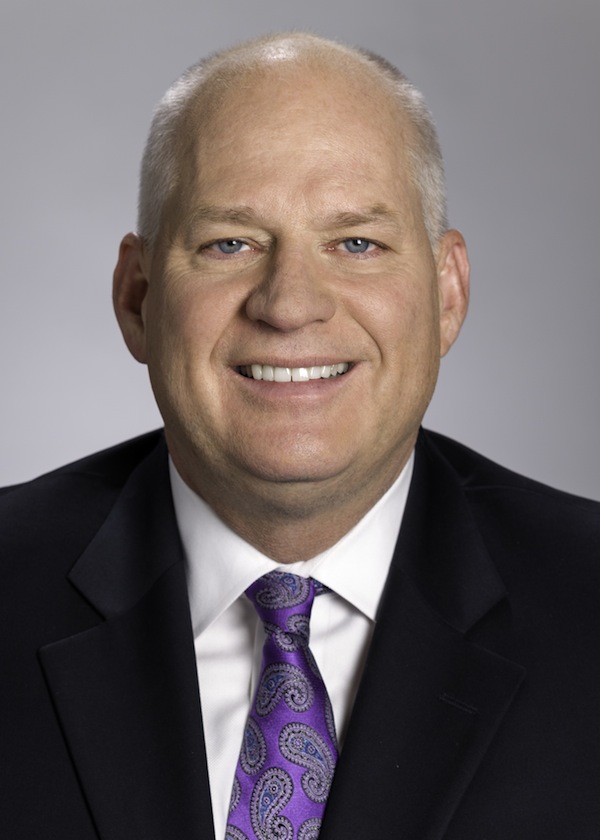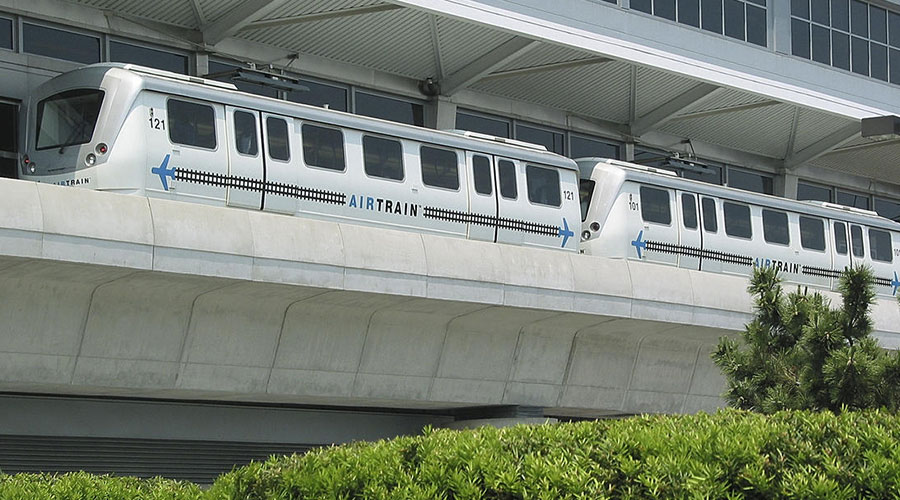Stay updated on news, articles and information for the rail industry
 railPrime
railPrime
12/15/2015
Rail News: HomePage
Outlook 2016: Class I railroad CEOs anticipate opportunities, challenges

Compiled by Jeff Stagl, Managing Editor
Will traffic and revenue grow next year? Where will growth come from? And what might prove to be hindrances in 2016? Those are the questions Progressive Railroading posed to Class I chief executive officers in late October to gauge their take on potential business prospects in the coming year. The emailed responses that follow were provided by BNSF Railway Co. President and CEO Carl Ice; Canadian Pacific CEO E. Hunter Harrison; CN Executive Vice President and Chief Financial Officer Luc Jobin (subbing for President and CEO Claude Mongeau, who’s on medical leave); CSX Corp. Chairman and CEO Michael Ward; Kansas City Southern CEO David Starling; Norfolk Southern Corp. Chairman, President and CEO James Squires; and Union Pacific Railroad Chairman, President and CEO Lance Fritz.
For extended Outlook 2016 coverage — focusing on several of the CEOs’ answers to an additional question on the positive train control deadline extension — follow this link.
What's your take on near-term business–growth potential heading into 2016? What, predominantly, will drive growth next year?
Fritz: UP’s franchise diversity is supported by a balanced mix of six business groups, providing a strong competitive advantage as we move into 2016. As for 2016, we’re still in the planning process. It looks like we may have opportunities in many of our business segments, but it also appears our energy-related volumes will continue to be challenged. Energy prices, the consumer economy, grain markets and the strength of the U.S. dollar all will be key factors to future demand. Long-term, highway conversions continue to shift domestic intermodal business to UP, and we think there is still a significant conversion ahead. This business is supported by our integrated network, expanded service offerings and a strong value proposition that offers customers reliable, truck-like service. Another long-term opportunity for UP is trade with Mexico — this means more than automotive parts and finished vehicles. Intermodal, ag products, industrial products and chemicals all represent potential for cross-border trade. Auto production in Mexico is forecasted to exceed 4 million units by 2017, largely due to the number of new plants being constructed or in the planning phase. It’s too early to tell exactly what this opportunity could mean for us, but we believe we’re well positioned to compete with our premium service offering, physical footprint and network of more than 40 distribution facilities. Given the uncertain environment, we’re taking a hard look at our capital expenditures for 2016. At this point, we expect they will be somewhat less than this year’s $4.2 billion capital spend. Our plan does include the acquisition of around 200 locomotives.
 E. Hunter Harrison
E. Hunter HarrisonHarrison: Intermodal and merchandise are areas where we will continue to focus our efforts on growing market share from our improved service offering. We also look forward to growth on the potash side, with the K+S Legacy mine [in Saskatchewan] going into production in late 2016. Regardless of what the macroeconomic environment is, CP is going to focus on what we can control. This includes right-sizing our assets, controlling the bottom line and investing in our infrastructure. While CP is optimistic that the overall economy will improve and revenues will increase, it is important to note that this model works in both good times and bad, and is built for the long haul.
Ice: We expect to see continued, but mixed growth heading into 2016. We will see growth in some sectors, such as intermodal, while others will be challenged. The U.S. traditional manufacturing sector, a key driver of railroad volumes, is feeling the adverse effects of the strong dollar and lower commodity prices. On the flip side, consumer spending has the potential for being lifted by lower fuel prices, which are expected to continue, as well as the declining unemployment rate. These are good indicators that the U.S. economy is continuing to recover — slowly but surely. That is why we strive to keep a balanced portfolio, providing rail services across multiple sectors. This diversification sets us up to continue to provide services, grow with a reasonable return and invest in our network. At BNSF, we have a bias for growth and believe that it’s important to be committed to our customers’ growth. Our weekly volumes are consistently strong. Our volumes in 2015 surpassed our 2014 high of 214,000 units reaching 215,000 in September 2015. We have made significant investments in capacity and are well-positioned to capture growth and meet our customers’ demands. We anticipate that domestic intermodal will remain one of our fastest growing businesses — putting truckloads on rail for the long-haul across a number of our corridors. Even though growth wasn’t as strong as we anticipated in 2015, most forecasts of future rail traffic trends show that as population continues to increase, there will be an ever-increasing demand for rail services — and thus a need for additional rail capacity. For example, the U.S. Department of Transportation expects total U.S. freight movements to rise from around 19.7 billion tons in 2012 to 28.5 billion tons in 2040, that’s a 45 percent increase. That’s why at BNSF we have had a long history of investing to improve and expand our network. Since 2000, we will have invested more than $50 billion in our network so that we can grow with our customers.
Jobin: Broadly speaking, we see ongoing challenges with respect to commodities, particularly coal. Fortunately for CN, coal only represents about 5 percent of our total revenues. We also expect some challenges in 2016 with respect to Canadian grain as the current year crop is below average. In addition, weak commodity demand and global competitive pressures have affected steel and iron ore shipments, and we expect those issues to persist into 2016. Energy markets remain very difficult to forecast. We are looking forward to some stability. On the positive side, CN has good exposure to the U.S. consumer and we see strength in shipments related to U.S. housing construction and vehicle sales, as well as containerized shipments, particularly from Asia to the U.S. CN has consistently demonstrated its efficiency with respect to calibrating resources to the prevailing volume environment.
 James Squires
James SquiresSquires: Looking ahead to 2016, we face short-term headwinds in some commodity markets and with business conditions in general, but we believe those will be offset by continuing strength in consumer markets. We anticipate growth in intermodal, automotive, housing and construction-related industries, ethanol and basic chemicals in the year ahead. We have a three-pronged corporate strategy for the path forward in 2016 and in the coming years, focusing on safety and service; growth; and productivity and efficiency. We have developed specific plans and initiatives to drive each element of the strategy.
Safety and service: With a relentless focus on disciplined, rules-compliant, safe operations, we will deliver excellent service to our valued customers.
Growth: We will aggressively seek opportunities for volume growth, and we will achieve that through world-class service, asset utilization, and investment and pricing.
Productivity and efficiency: We will manage our existing assets carefully and conscientiously, reinvesting in track, bridges, locomotives and equipment, while ensuring that every dollar that we spend is tied to revenue and profit generation.
Our strategy is designed to carry us through changing economic cycles because it focuses on fundamentals. We are confident that with a reasonably stable economy and our own intense focus on safety and service, growth, and productivity and efficiency, we are well positioned for success.
Starling: KCS sees growth opportunities across most of our commodity groups and new business opportunities on its network as the economic outlook indicates moderate growth in both the U.S. and Mexico. In order to capitalize on these opportunities, KCS will continue its improvement in operational metrics and strategically invest in its franchise. We believe the intermodal business will return to growth as the Port of Lazaro Cardenas in Mexico will expand capacity in mid-2016 along with the reacceleration of converting cross-border truck traffic to rail. The outlook for our chemical and petroleum commodity group is positive and we expect growth in crude oil as Canadian heavy crude continues to move into the Gulf region.
Ward: We’re facing a varied business environment, with solid long-term growth potential in intermodal and merchandise markets being offset by continued weakness in our energy markets and export business. On balance, we have the most diverse business mix this company has ever seen, which means we can capitalize on opportunities in some sectors while we manage headwinds in others. The core sectors of the economy — including housing, automotive and chemicals — are exhibiting steady growth on a solid foundation, and we will continue to grow our intermodal and merchandise business over the long term. To capture the full potential of these opportunities, we have been consistently improving our service performance, investing in our network, and refining our network offerings. We will continue to pursue these strategies in the year ahead, as we seek to satisfy the demands of time-sensitive shippers and help our customers meet the challenges of global competition. Looking at specific markets, we’re working to reshape our network resources to manage the significant market changes we see. We are going to continue leveraging our intermodal infrastructure investments to convert shipments from highway to rail and expand our business. The National Gateway network of efficient, double-stack intermodal routes is nearly complete, and construction is underway on an expanded Virginia Avenue Tunnel in Washington, D.C., which will eliminate a congestion point that has long impeded the efficient flow of intermodal traffic along the East Coast. We remain focused on capturing a share of the estimated 9 million truckloads in the East that are strong candidates for conversion to intermodal service. In other markets, we expect to experience solid growth in our automotive business as we efficiently serve increasing light vehicle production trends, and a large fall harvest is driving strong domestic grain traffic. On the downside, the strength of the U.S. dollar is causing weakness in the grain export market and elevating the threat of increased ethanol imports. Metals customers are also experiencing the negative impact of the weak dollar as it favors imported steel, and the general strength in the chemicals business is being offset by weakness in the energy markets and a substantial decrease in demand for chemicals used in the oil drilling industry. Coal volumes, meanwhile, are continuing to decline. We are evaluating the resources devoted to our coal network to match them to demand. We are redeploying some of those resources to growth areas while continuing to provide efficient, reliable service to coal customers who remain an important part of our future.
What's your biggest concern in terms of any obstacles to business growth in 2016? How can the obstacles best be addressed?
Fritz: There are a number of question marks on the horizon — fuel prices, consumer confidence and the strength of the U.S. dollar. However, UP remains committed to running a safe, cost-efficient and productive railroad. It does appear energy-related volumes will continue to be a challenge in 2016. While weather is a predominant factor driving electricity demand, utilities made the choice to source more demand using natural gas. Utilities will likely start the year with larger than average inventory levels, evident in Powder River Basin stockpiles, which are now at 79 days, exceeding the five-year average by about 20 days. Although lower energy prices have also negatively impacted our shale-related volumes, the low cost of energy feedstock should be a positive in the long term for our chemical franchise. Our Gulf Coast chemical network is a tremendous strength for the franchise, and a number of new plant expansion projects are in the works, with some scheduled to come online beginning in late 2016, and into 2017 and 2018. More than half of these plants can be directly served by UP.
Harrison: Like many other companies, CP is closely watching the economic conditions in Canada and the U.S., particularly with softening commodity prices/markets. Should those conditions persist, CP’s continued focus on the best service at the lowest cost will serve the company well and assist in weathering any potential headwinds.
 Carl Ice
Carl IceIce: BNSF’s model is to build our railroad for growth. Growing our business and reinvesting revenues back into our network enable us to earn appropriate returns, which creates an incentive for us to further expand and continue this investment cycle. Our volumes have continued to grow, which has fueled our investments. However, the challenge for 2016 will be continuing to find growth opportunities and making investments in our network that align with the current overall slower economic climate. A good example of where BNSF heavily invested to effectively meet customers’ demands is along our Northern Corridor. Customers use the corridor to move grain to Pacific Northwest (PNW) export facilities, consumer products traveling to and from the PNW, petroleum products produced in the Midwest that are destined for West Coast refineries and coal destined for utilities across the corridor. We responded to the rapid growth experienced along the corridor by dedicating a record amount of capital to this region. Since 2013, BNSF invested approximately $3.5 billion to maintain the corridor and address capacity challenges between Chicago and the PNW. In fact, our ability to now offer domestic intermodal service schedules that provide the fastest expedited service to and from Chicago and St. Paul, Minn., to the PNW, and the only expedited service to and from Seattle, are a direct result of our record capital investment along our the northern route.
Jobin: The railway regulatory environment in the United States and Canada will continue to be an important subject of discussion in 2016. CN works hard to help inform lawmakers about the role that regulators have in fostering an efficient and safe rail industry that generates the returns required for significant capital investments in plants, locomotives and technology. We believe the U.S. federal government has struck the right balance through the work of the Surface Transportation Board and the Federal Railroad Administration. In Canada, the new Liberal government now has a significant opportunity to advance the competitiveness of Canada’s global supply chains — so critical to the nation’s economy — as it picks up the Canada Transportation Act (CTA) review process. The CTA sets out Canada’s National Transportation Policy, which emphasizes that transportation services are to be based on competition and market forces, and that government regulation and intervention should generally be limited to cases where the market cannot otherwise achieve satisfactory outcomes. CN believes that commercial principles and a stable regulatory environment are essential for an effective, well-functioning rail transportation marketplace. Innovation can only thrive in an environment that allows railways to work creatively with their customers and to earn revenues sufficient to make the sizable investments necessary in the business.
Starling: The commodity markets continue to be volatile, which could negatively impact metals and energy markets. Additionally, a few automotive plants in Mexico will be temporarily shut down for expansion and re-tooling in early 2016, which will have a short-term negative impact during the first half of the year, but is expected to drive automotive volume growth in 2017. As we look ahead, we will continue to expand our network capacity in the U.S. and Mexico to efficiently handle the business growth we project during the rest of this decade.
Ward: The primary headwinds affecting our business outlook are temporal factors; namely, the strong U.S. dollar and weakness in commodity prices. The currency situation makes U.S. producers less competitive globally, negatively impacting export customers in grain and coal, and promoting metals imports that displaces domestic steel production. In addition, low natural gas prices are clearly significantly challenging domestic coal volume, and low oil prices are creating downward pressure on crude oil demand and production. In this environment, our strategy is to remain focused on the fundamentals of providing safe, reliable service that consistently meets our customers’ expectations. By continuing to improve our safety and service performance — including investing to improve operating efficiency — we’re strengthening the foundation on which we will build long-term value for our customers and shareholders. Another important consideration is a balanced regulatory environment, which is crucial to the ability of CSX and the rail industry to continue reinvesting in our business and supporting national commerce. We’re going to continue working with other Class I railroads and with our elected leaders to make our voices heard and protect our industry from regulatory policies that would impede growth and weaken the U.S. economy.
Contact Progressive Railroading editorial staff.


 LRW Honors Amtrak’s Acheson As Railway Woman Of The Year
LRW Honors Amtrak’s Acheson As Railway Woman Of The Year
 From Editor-In-Chief Foran: Of Gender Equity And Inclusion
From Editor-In-Chief Foran: Of Gender Equity And Inclusion
 Spotlight On Some Of Today’s Rail Safety Products
Spotlight On Some Of Today’s Rail Safety Products
 Women of Influence in Rail eBook
Women of Influence in Rail eBook








